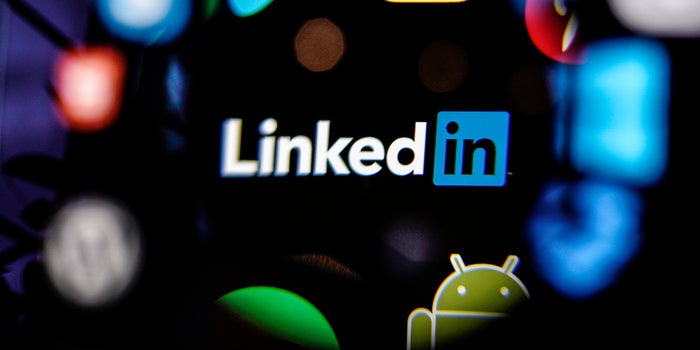Future-proofing your business with social is all about committing to the long game.
Market leaders have capitalised on digital marketing since the early 90s, but the current level of awareness toward the use of online tools for marketing has been unprecedented — here in Europe and elsewhere around the globe. The first half of 2020 has habituated many people to include online interactions and transactions in their business dealings as well as their consumer behaviour. Many experts opine that the pandemic has reduced physical interactions and elevated online marketing to the role of a critical survival tool, i.e. protecting the business from uncertainties and risks of present and the future.
While many businesses and clients have been thrust into the online space, LinkedIn has emerged as trusted platform for networking, lead generation and sales. It can be an ideal place to get started, establish your lead generation funnel and future-proof your business. This is how I advise my clients to ensure that their business remains resilient:
1. Gain digital trust.
You may employ some of the same principles to gain digital trust for both your professional profile and company page. The objective of establishing a digitally trusted brand transcends all tips and tactics of LinkedIn marketing. It results in brand loyalty through participation in an online community, relevance, and shareability of content and the overall user experience of consuming information and interacting on your posts and articles.
2. Build the right network.
Like offline marketing, LinkedIn also depends on referrals and endorsements. Unlike offline activities, your interactions are in public view and have the potential to automatically imply a positive relationship with decision-makers, thought leaders and influencers.
3. Source strategic inputs.
A key input of future-proofing is to have the right strategy for the times ahead. Fortunately, LinkedIn is home to valuable content that is posted daily by credible industry experts and thought leaders.
Many influencers post the spontaneous versions of their articles on LinkedIn before they elaborate and repurpose it for journals. The timely and subscription-free access to such information could serve as valuable inputs to your business strategy as well as your content marketing.
4. Blend verifiable data with unique insights.
Verifiable data invites views and unique insights are instrumental in attracting engagement. If your content is visible to the right network of contributors — i.e. experts, influencers, and target audience — you not only gain their trust and insightful responses, but you also start to build a following that can help widen your distribution net exponentially.
Since LinkedIn is a content-driven social network, a lot of your data can be sourced from the content within LinkedIn and blended with your own insights to generate original content.
5. Optimise your content for searchability and utility.
There are simple ways to do search engine optimization (SEO) for any kind of content, such as profiles or company pages, text or video, data-driven or heartwarming or how-to posts. While anyone can acquire the traits to be SEO friendly, you must also create and optimise your content in such a way that it is refreshing, reliable, and useful.
In a few weeks, this can help refine the parameters of identifying your target audience and marketing your content to them. Assess where you fit in and how your brand can be more appealing. If you want to save the time and effort, you can opt for a paid membership plan like the Sales Navigator and also seek guidance from a LinkedIn consultant like myself.
Curate your feed by following and unfollowing people in order to “train” the LinkedIn algorithm to show you only posts you are interested in or from your “ideal client.”
6. Promote P2P content distribution.
LinkedIn Marketing isn’t just about creating a network of people who consume your content. It’s also about creating a community of users who distribute your content.
In other words, you have to foster a person-to-person (P2P) network by stimulating a quid-pro-quo relationship with active influencers and also encouraging the contribution of followers who enhance your visibility in their network. Even a like or comment can improve your visibility and if a follower sees engagement from their network, some of them may choose to re-share or distribute your content.
The inimitable “golden hour” in which you have one hour after a post is published to gain the most traction has just been abandoned by LinkedIn and posts are still shown to your network for up to a week after posting.
Remember: Future-proofing your business with social is all about committing to the long game. Develop your strategy now to help ensure your visibility in and viability for the future.
This article originally appeared on Entrepreneur.



